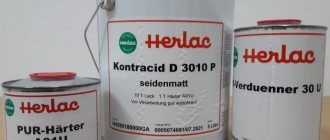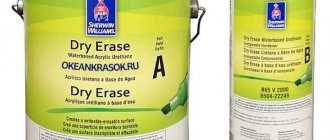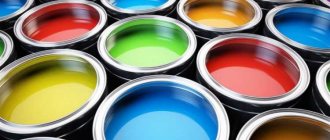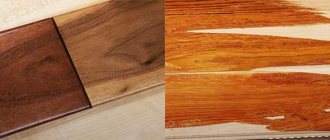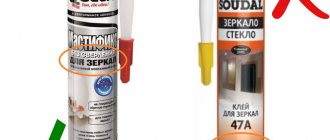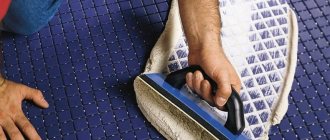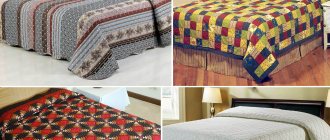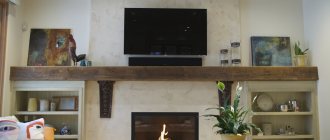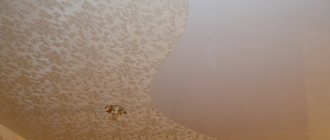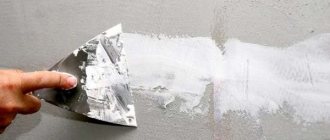The spectacular texture of Roman stone is imitated by decorative travertine plaster, which can be used to easily decorate any interior. Travertine is a fine-grained calcareous tuff (a rock form intermediate between marble and limestone) that can be easily sanded and polished. Thanks to its beauty and “obedience,” the stone was widely used already in ancient times. It was called travertino or stone from Tibur. It is characterized by its sponginess and porous structure.
What is decorative travertine plaster
The material got its name because of its similarity to the rock type of stone. It creates a similar effect on the wall. The coating turns out to be porous, which is unusual for such substrates. Previously, natural stone was used to cover facades. Now they get the desired appearance using special solutions. Standard shades are light yellow, gray, beige.
The coating turns out to be porous, which is unusual for such substrates.
What does it look like
Natural travertine has a porous structure, light yellow, beige, and sometimes gray-green color. It lends itself well to polishing and sanding. The porous texture of the stone is susceptible to precipitation and exhaust gases, so it is more often used as a finishing material for interior walls.
What real travertine looks like can be seen in the photo:
Textured plaster with a travertine effect very accurately replicates the color and texture of the stone. How it looks in the interior, look at the following photos:
Decorative plasters also include liquid travertine - an elastic mixture consisting of 90% ground natural stone and binders. This coating is often used on facades in combination with imitation block masonry, as well as columns and other elements of Roman (Romanesque) architecture, in which travertine was widespread. This is where the name travertino romano comes from.
History of origin and composition
The use of stone to enclose and transform the appearance of a building has been known since ancient times. A room made of stone material seems eternal and durable.
The Romans began to use plaster material filled with stone chips. The choice of decorative plaster Travertino was in demand during the Florentine period, the mortar was used on a par with marble.
A famous travertine structure is the Colosseum.
A famous travertine structure is the Colosseum.
Finish coating
The finished surface already has high strength and withstands mechanical stress well. However, a topcoat may be used to improve performance as well as measure surface color. This type of coating allows you to improve the quality of the material and change its appearance.
Coloring
If you want to change the color of the coating, you can use paint. There are two main options for painting walls with decorative travertine plaster:
- The first method involves adding color to the finished solution. Tinting is carried out at the preparatory stage, in which the required color is added to the solution, and after that the mixture is applied to the wall. This option is suitable for a small amount of work.
- A more convenient way is to apply paint over the treated surface. Once the wall is completely dry, you can apply a coat of paint using a roller or brush. You can paint the walls with one color, and if you wish, you can create a pattern or use a game of contrast.
Varnishing
Varnishing is used to impart properties such as wear resistance and moisture resistance to the coating.
It should only be applied to a completely dry coating. Using a wide brush, the composition is applied in thin layers; several layers can be used, with at least 2-4 hours between applications. If you want to create a bright image in the interior, you can add dye or decorative fillers to the varnish.
Waxing (waxing)
Another finishing option is waxing.
Apply the composition in a circular motion so that the wax penetrates deep into the travertine. After drying, you can use a rag to remove any remaining mixture and excess marks on the surface.
Features of travertine
Travertine plaster helps to achieve an unusual style on the surface, imitating stonework. But the product also has other advantages:
- Enhanced strength characteristics;
- Wear resistance;
- Hydrophobic protection is created.
Ingredients in a standard recipe include:
- Fine and purified sand;
- Lime with tiny particles of minerals in the form of dust or crumbs;
- Binders that help to obtain a high-quality level of adhesion to the base;
- Decorative additives.
Travertine plaster helps to achieve an unusual style on the surface, imitating stonework.
Ways to imitate a stone wall
So, let's look at what you can use to make a wall in your house or apartment like in an ancient castle. If we do not take into account the cladding made from natural prepared material, then there are several popular methods of imitation:
- From tiles. This does not mean tiles, but relief tiles made from gypsum or cement-sand mortar. Artificial stone is sold ready-to-use, already painted, and is used for interior decoration and on facades. Most often this is an imitation of torn slate, limestone (travertine), dolomite, sandstone or rock. You can make such tiles yourself by pouring the solution into rubber molds. But this is a labor-intensive process that requires special equipment (vibrating table) and painting materials for high quality.
- Stone-look panels. Plastic panels are often used for cladding the facade of a building. The advantages of this method: speed of work, practicality, attractive appearance, reasonable price. The textures are the same as those of stone made from gypsum slabs - slate, limestone, etc.
- Made from polystyrene foam. This cheap way to create artificial stone requires creativity and certain skills. The essence of the decorating process is to cut out masonry on a sheet of polystyrene foam (foam plastic, penoplex, etc.). The surface is roughened using hard brushes or other available tools. After the finished panel is glued to the wall, it is painted in a suitable color.
- Made from plaster. This is no less simple, but more practical and, perhaps, the most common type of stone finishing. Plastic mortar provides enormous opportunities for simulating any stone surface. For decoration, I will use gypsum, cement-sand (on the facade) or polymer plasters (acrylic, silicate, silicone). They may contain mineral fillers: sand, marble chips, rounded granules, etc., which help emphasize the created effect of the stone texture. Below we will look at this finishing method in detail.
Varieties of travertine
Travertino plaster can be used to create the interior of an apartment, or for facade work on the outside of a building. For this, different components are used to ensure that resistance to environmental factors is at the required level. So for exterior work you will need a mortar with white cement, for the interior it will be suitable with marble and quartz chips.
Travertino plaster can be used to create the interior of an apartment, or for facade work on the outside of a building.
Silicate mixtures
Modified and acrylic polymers are used for production. It is distinguished by the creation of a layer that allows air to pass through well, allowing the walls to breathe. It also does not crack or change shape over time. It is not subject to the formation of mold and mildew.
It is distinguished by the creation of a layer that allows air to pass through well, allowing the walls to breathe.
Mineral compositions
Often chosen for outdoor work, they can withstand the harsh conditions found outdoors. A durable protective layer is created for the facade. It stands out for its low consumption and high level of adhesion. Suitable for working with cement, gypsum, concrete, plasterboard and chipboard.
Often chosen for outdoor work, they can withstand the harsh conditions found outdoors.
Travertine facade - weighing the pros and cons
Choosing the optimal material for the exterior decoration of a building today is not easy, primarily due to the huge variety of options presented on the construction market. Modern trends push people to choose practical natural materials, thereby returning to the origins of construction. Perhaps the most luxurious and reliable way to decorate the facade of a building can definitely be considered the use of natural stone, which copes well with any mechanical and atmospheric loads, and at the same time makes the house incredibly beautiful.
The first thing that comes to the average person’s mind when mentioning natural stone is, of course, noble marble and granite, which over many centuries of use have acquired a reputation as noble aristocratic materials. In fact, against the backdrop of the enormous popularity of granite and marble, customers quite often overlook such a type of natural stone, unique in its properties, as travertine, which, according to most experts, is completely undeserved. Few people know, but this type of stone was preferred by the architects of ancient Rome, the main evidence of which is the famous Colosseum, which has survived to this day, preserving all the beauty and charm of such an ancient building.
Surface preparation and application of plaster
The material is applied to a prepared base; there is no need to perfectly level the wall. A porous coating can cover small defects.
A deep penetration impregnation based on acrylic is applied to the cement base. The gypsum, chipboard and fiberboard base is processed in several layers. After priming is carried out, you must wait for complete drying before the next stage of work.
The material is applied to a prepared base; there is no need to perfectly level the wall.
Manufacturers of high-quality plaster - alternatives to natural stone
Italian companies are considered the best manufacturers. When choosing a material, we recommend paying attention to the products of the following brands:
- COLORIFICO SAMMARINESE
The company was founded in 1944 and is considered the oldest enterprise in Italy for the production of decorative plasters. The manufacturer offers a wide range of colors, a variety of textures and affordable prices with high quality products. - SPIVER
The history of the enterprise begins in 1978 , when the trademark was registered. The founder of the company, Salvatore Spinello, hatched plans to create an ideal line of decorative coatings during forced emigration.
Now the company has the world's highest production capacity, its own expert laboratory and a staff of qualified employees. SPIVER products are known in 45 countries around the world.
- COLORIFICO VENEZIANO
The factory appeared in 1974 in one of the suburbs of Venice. The main production facility for the production of marble chips is located here, which has reduced the cost of production to a minimum. The company is constantly expanding its range, releasing very original textures to the market.
It has proven itself well among domestic companies. The company has repeatedly won international exhibitions and since 2004 has been producing decorative plasters on the domestic market at prices much lower than European ones.
Decorative works
Travertino plaster is not limited to applying the main layer; it is also necessary to carry out other work afterwards that will provide the desired effect. Additional steps:
- Sanding, the main part will become glossy and the recesses will become darkened.
- Tinting, a new shade will highlight the pattern of the stone.
- Apply wax to increase moisture protection.
- Applying varnish; it is advisable to protect the painted surface with a varnish coating.
Travertino plaster is not limited to applying the main layer; it is also necessary to carry out other work afterwards that will provide the desired effect.
Waxing and tinting.
Completely dry plaster can be left as is or finished. Subsequent finishing layers and operations are not required, but are desirable:
- Grinding. Sufficiently well-leveled plaster (its convex elements) may not need to be sanded. But sanding is useful from a design point of view:
- Gloss. The rougher the wall, the higher its dullness.
It is impossible to sand the depressions; they remain completely matte. When polished, the convex and dropped parts of the pattern become smooth, and the gloss increases slightly. This creates an interesting, pleasant combination of shine and lack thereof.
- Contrast of shades. The paint adheres more densely to rough surfaces. Therefore, the sanded parts of the pattern will be lighter after painting, which is a feature of two-tone tinting of walls.
- Primer. The plaster must be primed to saturate its pores (if it is decided to perform a facial finish).
- Coloring. Traditionally, decorative colored travertine plaster is covered with tinted wax (containing coloring pigments). This will improve aesthetics and create a water-repellent film that can be washed later.
If you decide to abandon wax, you can simply paint the plaster with water-based paint (acrylic, acrylate, latex, silicone, dispersed).
Important! After applying the paint, quickly, before it begins to be absorbed and dry, it is wiped with a flat, dry, absorbent surface (a rag put on a grater, a piece of felt, a painting mitten).
The essence of the operation is that it will not be possible to completely erase the paint; the color will remain the same. But on smooth areas it will be much less. So, with the help of color contrast, the relief is emphasized.
- Varnishing. Some water-based paints require coating with appropriate varnishes.
Silicone waterproof impregnations can be used to allow the wall to come into contact with water when washed.
- Waxing. Travertino plaster is not waterproof. She needs appropriate protection.
Wax can be either untinted or colored.
The technique for applying it is the same: after painting, the wall is wiped to highlight the contrast of the fragments of its plaster. Due to its environmental and thermal characteristics, wax is preferable to paints and varnishes.
Application of travertine
It is necessary to dilute the mixture of plaster with water, according to the instructions on the manufacturer’s packaging. The first layer is applied using a plastic trowel with rounded edges; the layer is made thin, no more than 1 millimeter.
The next layer can be done after 12 hours. The application method may differ depending on the chosen technique for obtaining the pattern.
The second layer can be done after 12 hours.
The main advantage.
Installing Travertino yourself is not only easy in itself, it also makes it easier to apply the base plaster.
After all, when plastering walls there should be no differences of more than 1mm. But, if a beginner works independently, trying to save money (after all, workers will charge a lot of money per m2), he is unlikely to be able to make the walls perfectly even. This is where Travertino plaster can come to the rescue. She will hide all the flaws. data-matched-content-ui-type=”image_stacked” data-matched-content-rows-num=”2″ data-matched-content-columns-num=”3″ data-ad-format=”autorelaxed”>
Main and auxiliary tools
The layer should be 1-2 millimeters thick to get the desired effect. The average consumption is 1.5-2 kilograms per square meter. The indicator is influenced by the chosen surface treatment method, the type of product and the experience of the craftsman.
Tools used:
- Putty knife;
- Brush;
- Sander;
- Roller;
- Trowel;
- Masking tape.
When working, safety rules are observed; the master must protect himself with special clothing and PPE.
The layer should be 1-2 millimeters thick to get the desired effect.
No. 3. Floor finishing
Everything here is about the same as with wall decoration. Tiles are available in different sizes and with different surface treatments. If there is a source of water in the room (kitchen, bathroom), then it is better not to take the polished version - it is very easy to slip on such tiles. Do not be afraid that unpolished stone will absorb moisture - manufacturers treat the material with special adhesives that perfectly fill the pores of the product. It is better to take the most dense material possible, since there is an increased load on the floor.
Travertine is suitable for rooms such as hallway, kitchen, bathroom. In the living room it will look too cold and strict. Do not forget that tiles can be laid out not only in a strict order, like the cells in a school notebook, but also in a checkerboard pattern, diagonally, and whole patterns can be formed from products of different sizes. An interesting effect can be achieved by combining travertine of different shades and with different types of surface. You can also experiment by combining stone with other materials.
Plastering methods
You can apply the plaster solution completely to the base, or use the spray method. As a result, with the first method there will be grooves on the base over the entire area, with the second the layer will be in the tubercles. Features of the technology will be described below.
You can apply the plaster solution completely to the base, or use the spray method.
Creating a continuous coating
First, the surface is simply plastered; you can move on to decorative work when the second layer close to the surface has become hard and the outer part is still wet.
It is necessary to create the necessary recesses on the base. A spatula and a steel trowel are used. For beginners, it is more convenient to use a hard brush. The cost of this method is higher than that of the next one.
First, the surface is simply plastered; you can move on to decorative work when the second layer close to the surface has become hard.
Partial plastering
This technique is easier to perform for beginners. It is easier to make uneven surfaces than to achieve a glossy surface. It is necessary to spray the wall in equal proportions so that the flat and convex parts are the same.
The tool you can use is a square brush, a rag, or a sponge.
It is easier to make uneven surfaces than to achieve a glossy surface.
Methods for creating decorative relief
The method of applying structural plaster depends on its type and the desired effect. To work you will need the following equipment:
- tank for diluting the mixture;
- trowel, trowel, scraper;
- spatulas of different types;
- brushes, rollers, brushes, combs;
- mixer.
Please note: regardless of the type of plaster applied, the surface underneath must first be cleaned, leveled and primed.
Instructions on how to apply “bark beetle”, structural plaster with your own hands - video:
https://youtube.com/watch?v=KhGsjhz_i-M
Spray method
Plaster is applied using a broom and stick. They hold a broom in one hand and a stick in the other. The tip of the broom is dipped into the solution, and then it is hit on the stick so that the splashes hit the wall. Spraying is done in 2 layers.
An example of how to make a “fur coat” structure with an ordinary broom
Creating relief with a trowel
First, a continuous base layer of plaster is applied to the entire surface. When it dries, begin to apply the second layer, immediately forming patterns by moving the trowel in different directions. An example of how to apply structural plaster in the video:
Creating structure with a brush
A metal brush is brushed over the freshly applied layer of plaster, forming thin chaotic lines. When the coating is dry, remove small particles from it with a soft brush.
this structure is also called “bouffant”.
A simple technique for creating a “bouffant” relief - do-it-yourself structural plaster, photo
Stamping using a roller
Another way to get an interesting structure is to use a relief roller. It can be sold with a ready-made pattern, or you can create the texture yourself.
Idea: if you wrap a roller with thick threads, when applied, the plaster will imitate grass stems.
Technology of structural plaster relief “grass” using a roller:
https://youtube.com/watch?v=5x13yW9lvPM
There are many ways to apply relief. Would you like to learn more about how structural plaster is applied? Video tutorials will help you with this:
Advantages, disadvantages and properties of plaster
The disadvantages of the material are the complexity of the work; in order for the result to be worthy, it is advisable to contact specialists. Also, the consumption for a better result may become higher, but travertine has more advantages:
- Environmental friendliness;
- High level of strength;
- Resistance to moisture, fire, fungus and mold;
- Beauty of coating;
- Variety of colors;
- Can hide minor flaws;
- Easy to care for the plaster layer.
The disadvantages of the material are the complexity of the work; in order for the result to be worthy, it is advisable to contact specialists.
Travertine - standard tile or modern flooring?
The neutral color makes this material suitable for bedroom or living room flooring. In its most durable version, it is suitable for both the kitchen and the bathroom. In fact, you can use it in any home decor. On the other hand, experts emphasize that it cannot be used in public places. Very high use and high traffic may cause some changes to the ground to be visible, affecting its appearance.
Application technology
The technique for working with plaster mortar can be chosen differently, depending on the type of room and its features, and the material itself that was purchased; in order to decide on an option, you need to study the nuances of each.
The technique for working with plaster mortar can be chosen differently, depending on the type of room and its features, and the material itself that was purchased.
Continuous application
Standard option when plaster is applied normally. Only after it is necessary to obtain the necessary irregularities to imitate stone, a stiff brush is used. At the finish, use a damp trowel to obtain the desired evenness of the base.
Standard option when plaster is applied normally.
Partial application
In this case, the surface is pre-treated with a primer solution containing quartz. You can apply a plaster solution to the dried base, but not over the entire area, but to individual parts. After drying, evenness is achieved with a trowel; sandpaper or a sander will create the desired gloss.
In this case, the surface is pre-treated with a primer solution containing quartz.
Horizontal drawing
You need to scoop the mortar onto a spatula to tear through, when the entire wall is covered, then take a level to cut the plaster lines exactly along it. Trimming can be done before the layer dries. This helps to obtain transition lines characteristic of natural stone.
You need to scoop the mortar onto a spatula to tear through, when the entire wall is covered, then take a level to cut the plaster lines exactly along it.
Vertical drawing
This option is similar to the previous one in technology; the only level is held vertically, and vertical lines along the wall are cut off with its sharp part.
This option is similar to the previous one in technology, the only level is held vertically.
Making masonry
If you want to imitate masonry, you can draw lines using the sharp part of a trowel or a chisel. Some craftsmen simply pre-glue masking tape according to the masonry pattern, and after work remove it, leaving a pattern of stones on the layer.
If you want to imitate masonry, you can draw lines using the sharp part of a trowel or a chisel.
Texture - imitation of decorative stone
Plaster creates a complete imitation of natural stone. Travertine is a limestone pouf that naturally has a pale yellowish tint.
This stone has been used in construction and architecture since ancient times. A striking historical example of use is the construction of the Colosseum and St. Peter's Basilica. Perhaps this is why Travertino plasters are often called Venetian or Roman.
The composition is a multi-component mixture, the basis of which is quartz sand, lime and marble chips of a minimum fraction. If the material is intended for external finishing, white cement is used as the base and various dyes are added.
After application, the plaster forms a durable surface with an original, non-repeating pattern. Thanks to this feature, the composition helps to mask minor wall defects: chips, unevenness, cracks.
How to apply decorative travertine plaster for beginners
It is difficult for beginners to apply such schemes. But there is an easier option: first plaster the entire surface in the usual way. Afterwards, until the base is dry. Use a dry roller to roll the wall several times. After 10-15 minutes, the layer will dry, and the base is smoothed with a Venetian trowel. Afterwards, the surface is painted with a suitable glazing compound to deepen the transitions of the pattern.
First, plaster the entire surface in the usual way.
The most complex techniques for applying decorative travertine
Professionals can apply plaster in such a way as to obtain an unusual and very beautiful effect on the surface. The method of working with two mixtures is considered difficult: Vicenza and Fenice and Travertino in Polvere. The products are diluted with dyes of different colors. Apply solutions to areas that are marked in advance.
Professionals can apply plaster in such a way as to obtain an unusual and very beautiful effect on the surface.
Travertine in the kitchen - interior decoration
Besides granite and quartz, travertine is one of the most popular natural stones used in kitchens. Most often it appears on the surface next to the kitchen countertop . However, with the same success it can be installed on the entire wall, which will be lined with this material.
Travertine or stone imitation are ideal for both classic interiors and retro-style kitchens. Well soaked, do not require special attention - just regular wiping.
Unconventional use of decorative travertino plaster
It is possible to apply the plaster solution in two layers. The second is done chaotically to get an uneven pattern that will look more natural. They also resort to painting different textures with different shades, usually similar but different tones.
They resort to painting different textures with different shades, usually similar but different tones.
Tips and tricks from the experts
Following advice from professionals will help you carry out repair work yourself at the proper level. The following requirements are taken into account:
- Operate at temperatures from +10 to +25 degrees;
- It is necessary to get rid of large flaws in advance;
- It is better to choose a deep penetration primer.
They operate at temperatures from +10 to +25 degrees.
Travertino plaster is an excellent option for finishing the walls in a room; it is somewhat difficult to work with. However, there are different application methods, some of which are acceptable for beginners. Step-by-step work will help you get the desired effect.
The bathroom is the ideal room for travertine
Usually in the bathroom they choose a classic solution, most often tiles. However, if you want to highlight your interior a little and give it some character , you should consider using natural stone - travertine.
In the bathroom it will look great both on the wall and on the floor. It is quite resistant to various types of damage and, in addition, is associated with nature. Thus, its use provides high interior aesthetics .
Travertine washbasins can also be quite an unusual choice. They are extremely original and associated with luxury. Unfortunately, when choosing such equipment, you need to take into account that it is slightly more expensive than standard products. Some models even cost several tens of thousands of rubles.
